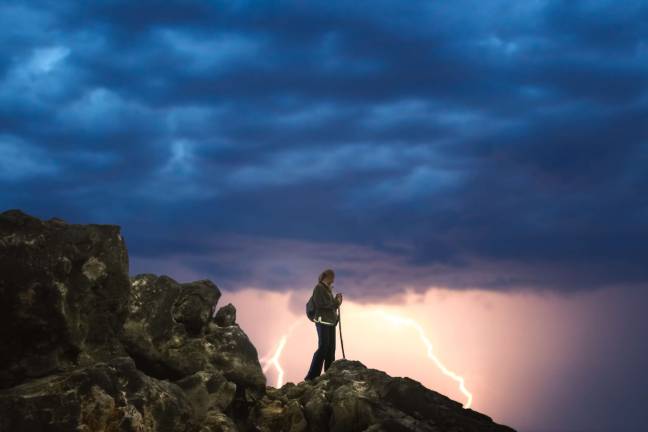Winter fitness: Safety tips for exercising outdoors

Exercise is safe for almost everyone, even in cold weather. But if you have certain conditions, such as asthma, heart problems or Raynaud's disease, check with your doctor first to review any special precautions you need based on your condition or your medications.
The following tips can help you stay safe — and warm — while exercising in the cold.
Check the wind chillCheck the forecast before heading outside. Wind and cold together make up the wind chill, a common element in winter weather forecasts. Wind chill extremes can make exercising outdoors unsafe even with warm clothing.
The risk of frostbite is less than 5 percent when the air temperature is above 5 degrees Fahrenheit, but the risk rises as the wind chill falls. At wind chill levels below minus 18, frostbite can occur on exposed skin in 30 minutes or less.
If the temperature dips below 0, or the wind chill is extreme, consider an indoor exercise instead. Put off your workout if it's raining or snowing unless you have waterproof gear. Getting wet makes you more vulnerable to the cold.
Know danger signsFrostbite is an injury to the body caused by freezing. It's most common on exposed skin, such as your cheeks, nose and ears. It can also occur on hands and feet. Early warning signs include numbness, loss of feeling or a stinging sensation.
Immediately get out of the cold if you suspect frostbite. Slowly warm the affected area — but don't rub it since that can damage your skin. Seek emergency care if numbness doesn't go away.
Hypothermia is abnormally low body temperature. When exposed to cold temperatures, your body begins to lose heat faster than it can be produced. Older adults and young children are at greater risk.
Symptoms include intense shivering, slurred speech, loss of coordination, and fatigue. Seek emergency help right away for possible hypothermia.
Dress in layersDressing too warmly is a big mistake when exercising in cold weather. Exercise generates a considerable amount of heat — enough to make you feel like it's much warmer than it really is. The evaporation of sweat, however, pulls heat from your body and you feel chilled.
The solution? Dress in layers that you can remove as soon as you start to sweat and then put back on as needed. First, put on a thin layer of synthetic material, such as polypropylene, which draws sweat away from your body. Avoid cotton, which stays wet next to your skin.
Next, add a layer of fleece or wool for insulation. Top this with a waterproof, breathable outer layer. You may need to experiment to find the right combination.
Stop-and-go activities, such as mixing walking with running, can make you more vulnerable to the cold if you repeatedly work up a sweat and then get chilly.
Protect your head, hands, feet, and earsWhen it's cold, blood flow is concentrated in your body's core, leaving your head, hands and feet vulnerable to frostbite.
Wear a thin pair of glove liners made of a wicking material (such as polypropylene) under a pair of heavier gloves or mittens lined with wool or fleece. Put on the mittens or gloves before your hands become cold and then remove the outer pair when your hands get sweaty.
Buy exercise shoes a half size or one size larger than usual to allow for thick thermal socks or an extra pair of regular socks. And don't forget a hat to protect your head or headband to protect your ears. If it's very cold, wear a scarf or ski mask to cover your face.
Don't forget safety gear and sunscreenIf it's dark, wear reflective clothing. And if you ride a bike, both headlights and taillights are a good idea. To stay steady on your feet, choose footwear with enough traction to prevent falls, especially if it's icy or snowy.
Wear a helmet while skiing, snowboarding, and snowmobiling. Consider using chemical heat packs to warm up your hands or feet, especially if you have a tendency to have cold fingers and toes or if you have a condition such as Raynaud's disease.
It's as easy to get sunburned in winter as in summer — even more so if you're exercising in the snow or at high altitudes. Wear a sunscreen that blocks both UVA and UVB rays and a lip balm with sunscreen. Protect your eyes from snow and ice glare with dark glasses or goggles.
Drink plenty of fluidsHydration is just as important during cold weather as it is in the heat. Drink water before, during, and after your workout, even if you're not really thirsty.
You can become dehydrated in the cold from sweating, breathing, the drying power of the winter wind, and increased urine production, but it may be harder to notice during cold weather.
Putting it all togetherKnow when to head home and warm up. And be sure to let someone know your exercise route and your expected return time in case something does go wrong.
Source: Mayo Clinic: mayoclinic.org